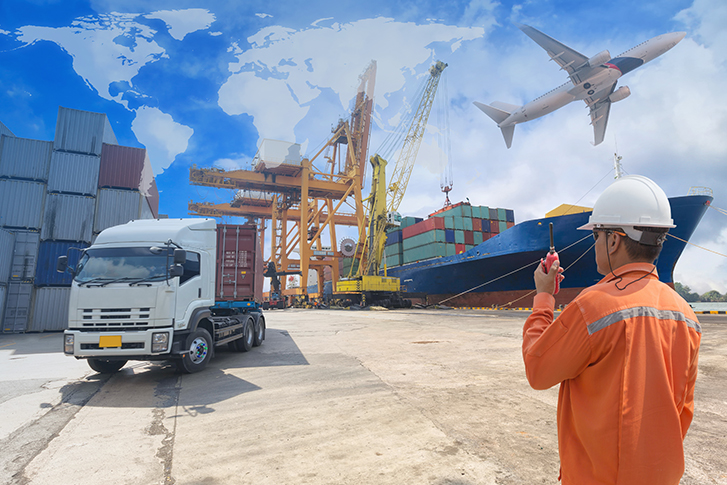Shipping cargo to India has many logistical challenges, from complying with customs to selecting the appropriate shipment method. Whether you deliver private belongings or commercial goods, you must ensure your shipment’s safety and security. India is an important global hub. Thus, a large amount of cargo enters the country. It is critical to follow best practices for safe and timely delivery.
Proper packaging, documentation, and selecting the appropriate shipping partner are just the beginning. It’s also essential to understand customs, use security seals, and insure the cargo. Whether you choose air freight or sea freight, preparing for different climate conditions and staying updated with tracking is necessary. It ensures that your goods to India arrive safely and effectively.
Choosing a trustworthy shipping partner is the cornerstone of ensuring secure cargo delivery. Reputable cargo services to India have extensive experience handling international shipments. They maintain compliance with regulations and deliver excellent customer service. Look for providers with positive ratings, transparent pricing, and a track record of on-time deliveries. Also, find a partner who provides tracking services. This allows you to track your shipment during its transportation.

Proper packaging is critical for protecting the cargo. Make sure the items are securely wrapped and padded to protect them from damage during transit. Choose high-quality materials. Use double-walled cardboard boxes, bubble wrap, and packing peanuts to protect fragile things. Larger goods may need the use of wooden boxes or steel containers.
Labeling is another key component. Label all packages with the recipient’s address, your contact info, and the contents. Fragile items should be marked. All labels should be waterproof to resist damage during shipping.
Compliance with Indian customs regulations is crucial for efficient cargo processing. Indian customs demand extensive documentation. These include a bill of lading, a commercial invoice, a packing list, and certificates of origin. Other documentation may be required, depending on the items. Researching customs regulations before exporting your cargo can help avoid delays or penalties.
Certain items may be restricted or prohibited from entering India. Before shipping, determine whether your cargo is on the restricted list and, if so, whether the necessary permits are in place. For example, explosives, narcotics, and certain chemicals require special permits.
Even with all precautions in place, accidents and unforeseen situations can happen. Cargo insurance protects you against financial losses. It covers any damage, loss, or delays to your package. Many shipping businesses incorporate insurance with their services. It’s critical to review the policy to understand what it covers.
Make sure the insurance covers your cargo’s total value. It should protect against risks like theft, damage from mishandling, and natural disasters. For high-value shipments, it’s best to get extra coverage or specialised insurance.
Security seals are an affordable approach to enhancing cargo security. Seals on containers or boxes ensure that the cargo is not tampered with during transportation. If a seal breaks upon delivery, it indicates that the shipment was tampered with. You can report it to the shipping company and customs.
Also, for high-value cargo, consider using GPS tracking devices. These devices allow you to track your shipment in real time. They also provide peace of mind by informing you about the whereabouts of your belongings. Some shipping services provide integrated tracking. It notifies you of delays or problems in real time.

Choosing the best shipping method is determined by multiple factors, including money, time restrictions, and cargo type. Air freight to India is often preferred for secure and timely delivery because it is faster and safer in general. Air cargo to India undergoes fewer handling procedures, reducing the chance of damage or theft.
Sea freight to India, on the other hand, is best suited for larger shipments or bulk items. Shipping by sea is less expensive but takes longer. It carries additional risks of severe weather and handling at several ports. To ensure security, consider shipping companies that use secure containers. They should also have effective security at seaports.
India’s climate varies dramatically. It’s humid on the coastlines and blazing hot inland. If your cargo will be transported across various climates, prepare for these variations before packing it. For example, heat-sensitive products may require insulation. Moisture-resistant solutions are recommended for humid locations.
For sea cargo, your cargo may be exposed to sea air, which might cause corrosion or water damage. Properly sealing goods in moisture-resistant materials can help reduce these risks.
When you need to send cargo to India, examine your cargo’s delivery choices. You can select door-to-door services. They will deliver your shipment to the recipient’s address. Alternatively, you can transport your cargo to a nearby port or warehouse and have the recipient collect it.
Door to door cargo to India is typically more secure. There are fewer handlers and transfers of cargo. However, this choice may come with a larger cost. When selecting a delivery option for your cargo, consider ease, security and cost.

Maintaining regular communication with your shipping business will ensure that you are aware of any issues or delays. Request regular shipping status updates, particularly for high-value or time-sensitive items. Many shipping businesses provide support channels. You can get real-time information about your cargo’s position and delivery date.
Establishing a connection with the addressee in India is also necessary. Make sure the recipient understands the expected delivery time and is prepared to handle any customs clearance or final delivery requirements.
Even with careful planning, unexpected obstacles may develop during overseas shipping. Have a backup plan. It should deal with challenges such as customs delays, inclement weather, and lost shipments. Allow extra time in your delivery timetable to account for such delays.
For delayed shipments, ensure you can quickly contact your shipper. This will help resolve the issue faster. For urgent deliveries, have a backup plan. Arrange alternate shipping methods in case of disruptions.
Shipping cargo to India can be a straightforward process if the proper measures are taken. Every step is critical to ensuring that your cargo arrives safely. This includes selecting a reputable shipper, employing appropriate packaging, and understanding customs regulations. These guidelines will reduce risks while Increasing the probability of successful delivery.